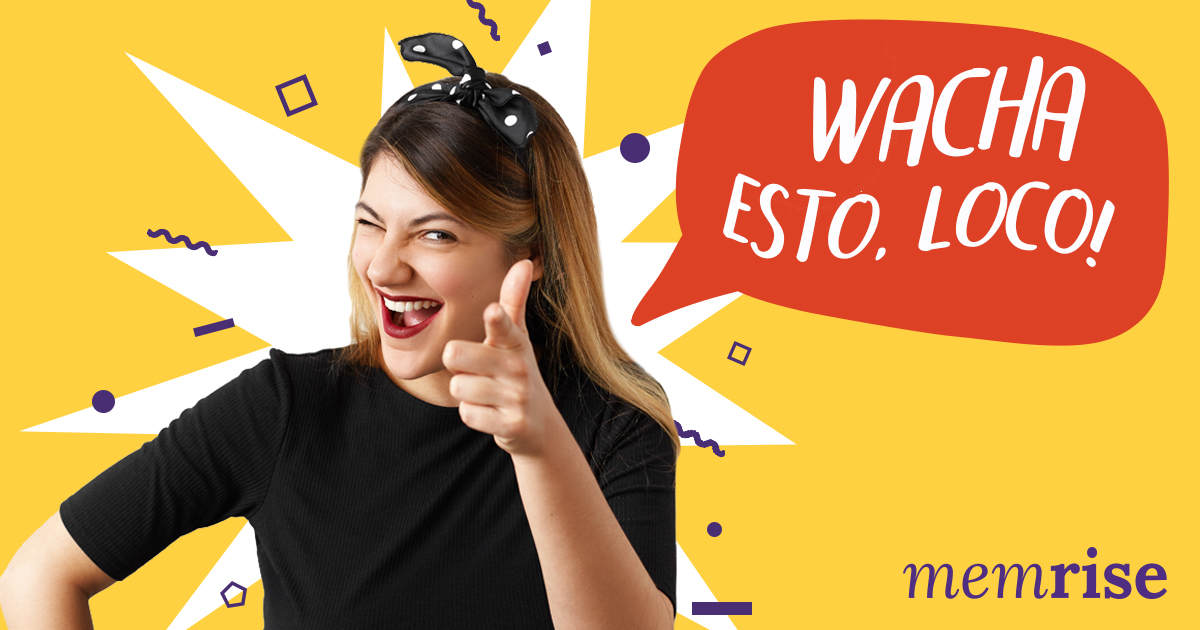“Spanglish” – You have most likely heard this word before. Or maybe “Inglañol”? Whether you have heard it before or not, you can probably hazard a guess at what it might be. Spanglish is the fascinating result of Spanish and English coming together and sharing words and grammar with each other.
The term Spanglish usually refers to Spanish with lots of English mixed in, whereas Inglañol usually refers to English with lot of Spanish mixed in.

The number of speakers of Spanglish is difficult to nail down, but we can be certain that it is in the millions. With over 40 million Spanish speakers in the US, it is completely natural that people would start to mix Spanish with English and vice versa creating a unique and diverse form of communication. That said, it is not only in the US that Spanglish is spoken. The use of Spanglish is on the rise and people are speaking it all over the Spanish-speaking world. For example, you might hear your Mexican friend say something like “¡Órale vato, wacha la ranfla, no la vayas a parquear ahí que anda rondando la chota!” (Hey, dude, watch the car, don’t park it there because the police are around).
Mixing languages in this way in a conversation between two or more bilingual speakers is called code-switching and is a very common and normal occurrence. See our previous post about this to learn more about code-switching!
The Spanglish spoken in different places also depends on the local varieties of Spanish and English, for example, the Spanglish spoken in Miami, where there is a heavy influence from Cuban Spanish, is very different from the Spanglish spoken in Puerto Rico.
Some typical Spanglish expressions
Some typical Spanglish phrases are directly translated from English and might sound pretty weird to a native Spanish speaker hearing Spanglish for the first time, such as:
Te llamo p’atrás – I’ll call you back (in standard Spanish: te vuelvo a llamar)
Está p’arriba de ti – It’s up to you (in standard Spanish: depende de ti)

Other Spanglish words are created when a Spanish word is used but with the meaning of a similar-sounding English word. For example, the word carpeta means folder in standard Spanish, but can be used to mean carpet in Spanglish. Some other examples are:
rentar – to rent (in standar Spanish ‘to rent‘ is ‘alquilar‘, and ‘rentar‘ means ‘to make a profit‘)
librería – library (in standard Spanish ‘library‘ is ‘biblioteca‘, and ‘librería‘ means ‘bookshop‘)
It is also very common to add the suffix ‘-ear’ to the end of a word to make it into a verb, for example: emailear (to email), twittear (to tweet), wachar (to watch), and parquear (to park).
Some people tend to think of Spanglish or Inglañol as ‘bad Spanish’ or ‘bad English’, but in reality, it is a unique variety of the language with elements of both and which reflects the awesomeness and diversity of the community that speaks it. Many children are now growing up speaking Spanglish as a first language, and lots of people are proud of their Spanglish identity.
There are many prominent Spanglish speakers in the world, many of whom have created songs, films, and other works of art using the languages. Check out this selection of Spanglish songs – you probably know a few of them! There is even a Spanglish translation of one of the most classic pieces of Spanish literature, Don Quijote de la Mancha, which was translated by Ilan Stavans, a sociolinguist and leading authority on Spanglish. You can read the first chapter here!
Feeling inspired to learn some Spanish?

Rob is Memrise‘s English Language Specialist, teaming up with the other language specialists to create language courses that will help you explore the world by unlocking your language superpowers. He also works with Memrise‘s Marketing Team to make fun videos and blog posts to inspire all the language learners out there.
In his spare time, he can usually be found learning languages – currently Hindi & Greek – and exploring the wonders that the London theatre and comedy scenes have in store.










